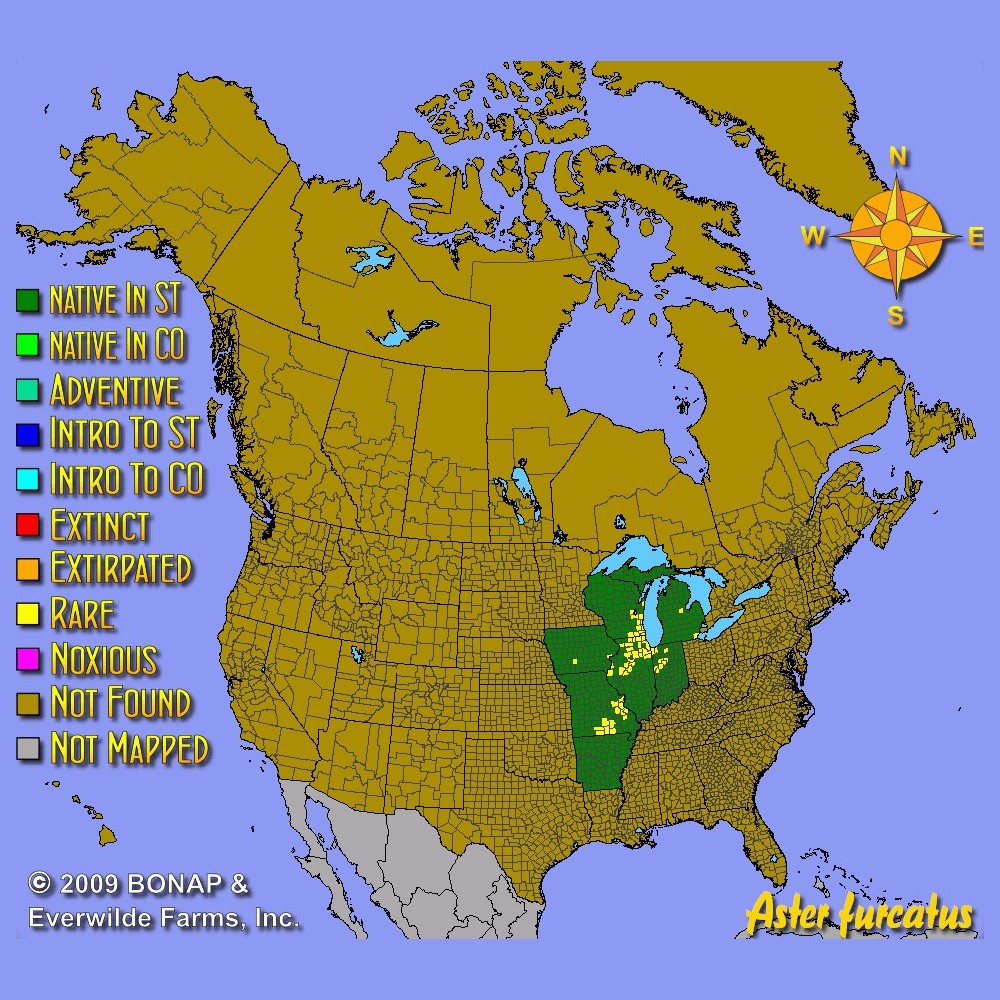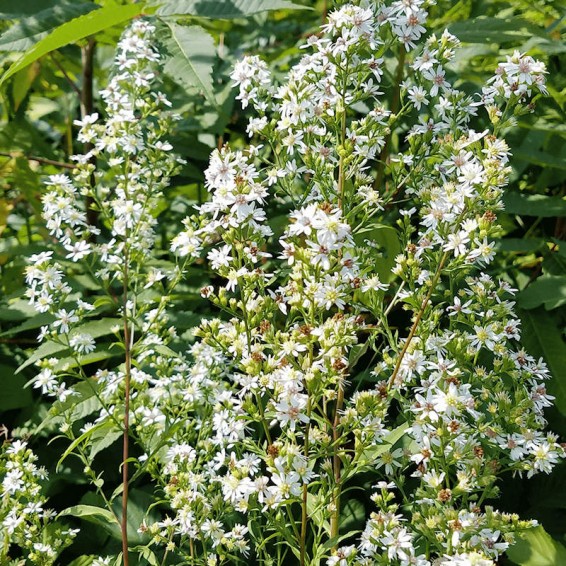Forked Aster Seeds
Aster furcatus
- HOW TO GROW
- FAST FACTS
HOW TO GROW
Sowing: Direct sow the seed in late fall, planting it just under the surface and watering it once. If direct sown in the spring, the seed must be stratified first by mixing it with moist sand and stored in the refrigerator for 60 days. To start the stratified seed indoors, sow it in a flat; keep the soil evenly moist and at a temperature of 65-70 degrees F until germination, which should take place within 14-20 days. Transplant the seedlings after the last frost of spring.
Growing: This plant prefers moist and or well drained soil, and does not tolerate shade. It prefers moist soil, and will benefit from occasional watering. This plant spreads almost exclusively by rhizomes, forming a colony over time if volunteer plants are not removed. Plants may need support or staking. Mature plants will benefit from division after two or three years of growth. These flowers attract bees and butterflies. Deer sometimes eat the foliage.
Harvesting: Asters make lovely cut flowers. Cut the stems long, choosing flowers that have just opened.
Seed Saving: This plant often fails to produce seed, since it does not easily pollinate itself.
FAST FACTS
Common Names: Heart-Leaved Aster
Latin Name: Aster furcatus
Species Origin: US Native Wildflower
Type: Native Wildflowers
Life Cycle: Perennial
USDA Zones: 4, 5, 6
US Regions: Midwest
Seeds per Ounce: 24,000
Stratification: Cold/Wet for 8 Weeks
Germination Ease: Stratify 8 Weeks
Sunlight: Full Sun, Part Sun, Shade
Height: 30 Inches
Color: Blue
Bloom Season: Blooms Early Fall, Blooms Late Fall
Uses: Attracts Pollinators, Attracts Honeybees, Attracts Butterflies, Cut Flowers
DESCRIPTION

HOW TO GROW
Sowing: Direct sow the seed in late fall, planting it just under the surface and watering it once. If direct sown in the spring, the seed must be stratified first by mixing it with moist sand and stored in the refrigerator for 60 days. To start the stratified seed indoors, sow it in a flat; keep the soil evenly moist and at a temperature of 65-70 degrees F until germination, which should take place within 14-20 days. Transplant the seedlings after the last frost of spring.
Growing: This plant prefers moist and or well drained soil, and does not tolerate shade. It prefers moist soil, and will benefit from occasional watering. This plant spreads almost exclusively by rhizomes, forming a colony over time if volunteer plants are not removed. Plants may need support or staking. Mature plants will benefit from division after two or three years of growth. These flowers attract bees and butterflies. Deer sometimes eat the foliage.
Harvesting: Asters make lovely cut flowers. Cut the stems long, choosing flowers that have just opened.
Seed Saving: This plant often fails to produce seed, since it does not easily pollinate itself.
FAST FACTS
Common Names: Heart-Leaved Aster
Latin Name: Aster furcatus
Species Origin: US Native Wildflower
Type: Native Wildflowers
Life Cycle: Perennial
USDA Zones: 4, 5, 6
US Regions: Midwest
Seeds per Ounce: 24,000
Stratification: Cold/Wet for 8 Weeks
Germination Ease: Stratify 8 Weeks
Sunlight: Full Sun, Part Sun, Shade
Height: 30 Inches
Color: Blue
Bloom Season: Blooms Early Fall, Blooms Late Fall
Uses: Attracts Pollinators, Attracts Honeybees, Attracts Butterflies, Cut Flowers



